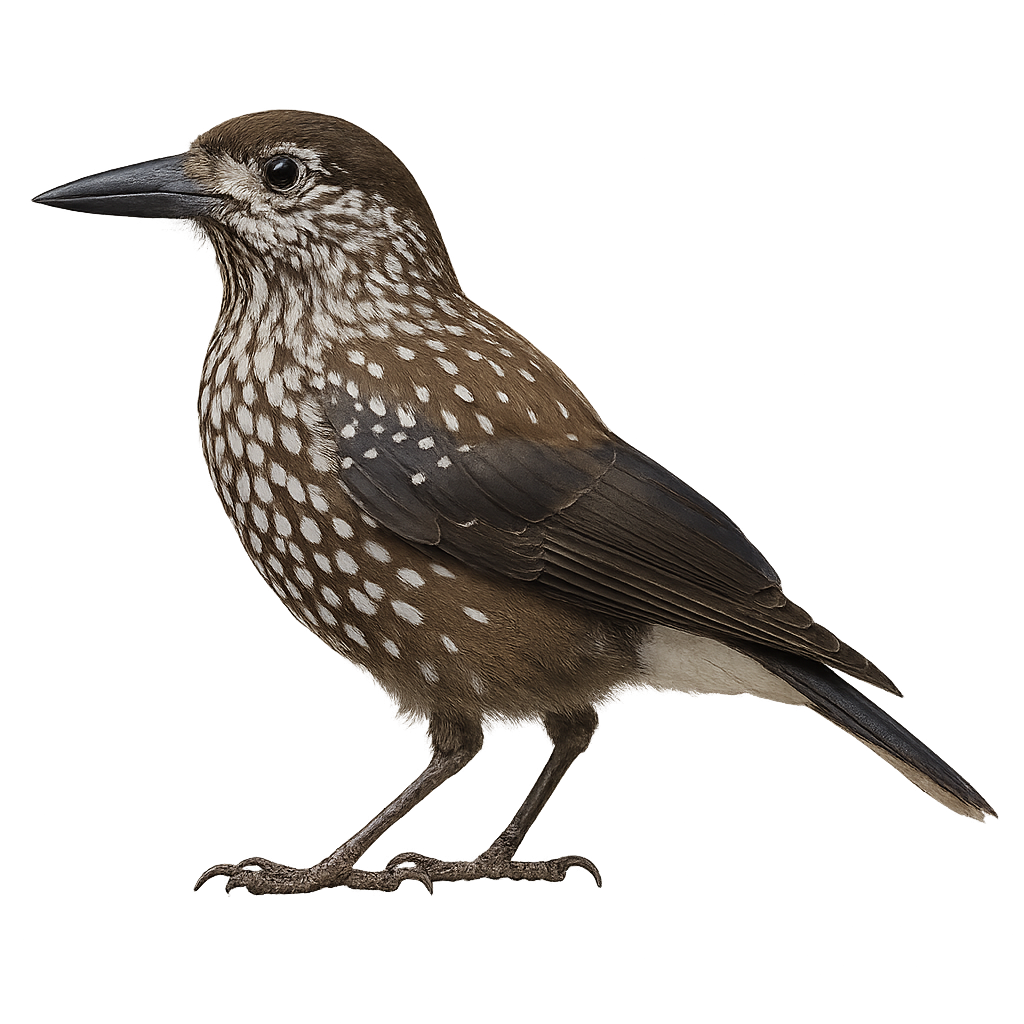Your wildlife photography guide.
Explore the spotted nutcracker in detail, study its behavior, prepare your shots.
Where to observe and photograph the spotted nutcracker in the wild
Learn where and when to spot the spotted nutcracker in the wild, how to identify the species based on distinctive features, and what natural environments it inhabits. The WildlifePhotographer app offers tailored photography tips that reflect the spotted nutcracker’s behavior, helping you capture better wildlife images. Explore the full species profile for key information including description, habitat, active periods, and approach techniques.
Spotted Nutcracker
Scientific name: Nucifraga caryocatactes

IUCN Status: Least Concern
Family: CORVIDAE
Group: Birds
Sensitivity to human approach: Suspicious
Minimum approach distance: 20 m
Courtship display: March to April
Incubation: 17-20 jours
Hatchings: April to May
Habitat:
Coniferous forests
Activity period :
Primarily active during the day, with peak activity in the morning and late afternoon.
Identification and description:
The Spotted Nutcracker is a medium-sized bird, easily recognizable by its spotted black and white plumage, which helps it blend perfectly into the coniferous forests where it lives. This passerine is primarily found in the mountainous regions of Europe and Asia, where it mainly feeds on pine seeds and other fruits, which it hides in tree crevices to consume later, a behavior that makes it an excellent food gatherer. The Spotted Nutcracker is also a migratory bird, although it may sometimes remain in colder areas during the winter.
This crow is known for its great intelligence and curious behavior, and it plays a crucial role in the ecosystem by dispersing tree seeds, thus promoting forest regeneration. While the population of this bird is generally stable, it may be threatened by the destruction of forest habitats, particularly in areas where coniferous forests are reduced by logging.
Recommended lens:
400 mm – adjust based on distance, desired framing (portrait or habitat), and approach conditions.
Photography tips:
Approach slowly and discreetly, using a telephoto lens to capture images from a distance, as the spotted nutcracker is a relatively shy bird that can easily fly away if disturbed.
Photograph early in the morning or late in the afternoon when the light is soft and the bird is more active, often searching for food in coniferous forests.
Capture moments of natural behavior: The spotted nutcracker is often seen searching for seeds in pine cones or hiding its food in caches. Wait for moments when it is engaged in these natural activities.
Be patient and respectful: The spotted nutcracker can be difficult to spot as it moves discreetly through the trees. Be silent and wait for moments when the bird is more visible without disturbing its behavior.
The spotted nutcracker is a vulnerable species due to habitat loss, mainly coniferous forests. It is essential to respect its natural environment, not disturb its foraging behaviors, and follow local conservation rules to preserve this species and its forest habitat.
The WildlifePhotographer App is coming soon!
Be the first to explore the best nature spots, track rutting seasons, log your observations, and observe more wildlife.
Already 1 427 wildlife lovers subscribed worldwide

